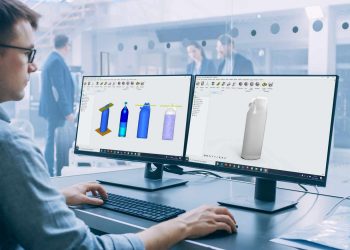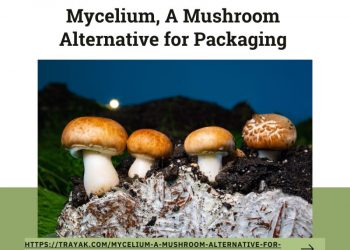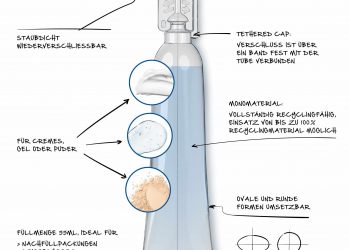We know that Polypropylene is a wonderful material for Packaging. Its inert, has high stiffness, good clarity and lower density. The material has made inroads into host of applications in Packaging.
In today’s competitive industry where consumer & Brand Owner want best functionality and shelf appeal & converter wants to meet those requirements and high conversion speed & energy savings, the challenge is tough. On top of it there is always a need of replacing expensive resins with Polypropylene for cost economics.
To meet the growing industry demand and to penetrate further in different applications, we need to bridge the gap between the Consumer Preference and Product Characteristics. We need to make a step change in Polypropylene Packaging by making it more attractive to consumer, make it more clearer and almost matching with materials like PET, Glass, SAN etc. and make it run faster on the converting machine to boost productivity and reduce the energy consumption.
This is only possible if we use the best of class “Clarifier” and get everything what the converter, brand owner and consumer is looking for.
This article aims to bring forward the technical aspects of PP Clarification mechanism and gives information about how we can work around for improving the overall performance of the value chain with the help of latest generation Milliken Clarifier Millad® NX™ 8000 which is most widely used Clarifier by Polypropylene Packaging Industry.
How Clarifier works?
Clarifying agents typically consist of small molecules that exhibit monotectic phase behaviour with the polymer matrix, dissolving at elevated temperatures in the polymer melt and crystallizing into nanofibrils or a nanofibrillar network upon quenching, thus providing a very large surface area for the polymer matrix to nucleate upon. In this way, it has been argued that clarifying agents drastically increase the nucleation density, thereby reducing the size of the spherulites that are responsible for the scattering of light, resulting in a more transparent material
Clarifiers basically jump-start the crystallization process as the Polypropylene resin cools inside the mold. Usually non-clarified PP forms crystals larger than the wavelength of light. Clarifiers induce formation of smaller spherulites that scatter less light. At the same time since the crystals form faster, the polymer solidifies faster, and cooling time is reduced.
Nucleators also do the same job but we need to always remember that Nucleators cannot reduce the haze dramatically. Traditionally we have been using Talc& Sodium Benzoate as common nucleating agents, but they have limited ability to influence the haze of molded product. They also have poor organoleptic and inadequate heat stability. In nut shell we can say that “All clarifiers nucleate, but all nucleators do not clarify”
How Millad® NX™ 8000 works?
Processability of PP resin & clarity of molded product will depend upon how fast the clarifier melts and solubilizes in the resin during converting process & how small and dense crystal it can make in PP during the cooling process of Injection Molding.

Millad® NX™ 8000 clarifying agent solubilizes in the molten polypropylene and precipitates from the melt upon cooling to form a fibrous network whose surface becomes the nucleation site for the PP. This surface creates a very high nucleation density, forming tiny crystallites that are too small to scatter light. The fibers themselves are also too small to scatter light
What’s different in Millad® NX™ 8000 as compared to 3rd Generation Clarifier?
Traditional clarifiers require a minimum temperature of around 220°C before they will dissolve in PP. At this temperature, the fibrous network is not properly formed, preventing high transparency. Millad® NX™ 8000 has improved solubility characteristics in PP which allow processing at lower temperatures. This creates a broader, more robust processing window and a dramatic improvement in the clarity of polypropylene molded product.
Traditional clarifiers have limitation of offering “Tunable Clarity” to Polypropylene. Millad® NX™ 8000 has very high ability to fine tune the clarity by careful selection of appropriate resin having clarifier or by using Non-clarified resin and add Millad® NX™ 8000 as a Masterbatch to the resin. However, Clarified PP resin is always preferred over Masterbatch route to keep the cost under control.
Increased Productivity and Energy Savings
Polypropylene (PP) clarified with Millad® NX™ 8000 is revolutionizing the industry by creating new opportunities for crystal clear packaging and products never seen. Transparency is no longer limited to thin or highly oriented parts, allowing even thicker parts to approach the look of clear materials like glass or amorphous polymers.
Also, PP based on 3rd generation traditional clarifiers (DMDBS) requires high processing temperatures to optimise transparency/clarity. The better solubility of Millad® NX™ 8000 provides improved aesthetics at significantly lower temperatures than traditional clarifiers.
Numerous industrial test data indicates that use of PP clarified with Millad® NX™ 8000 can lower required processing temperatures from 235°C to 190°C, resulting in energy savings between 8 and 12% and associated CO2 emissions reductions.

Lower temperatures mean lower energy consumption and shorter cooling time, hence improved productivity. The overall concept results in a more sustainable solution.
This aspect of Millad® NX™ 8000 has been recognized by UL Laboratory. The clarifier has received a clear distinction in the form of UL Label which says “Millad® NX™ 8000 enables an average of 10% energy savings for production of clarified PP parts”. Any converter or Brand owner (after completing necessary formalities with UL Lab under guidance from Milliken Chemical) can put this label on their part for differentiated product offering to the consumer.
 Enhance Quality
Enhance Quality
Millad® NX™ 8000 improves the shelf appeal of both individual and stacked parts. The material is brighter and less yellow in appearance and looks fresher and cleaner overall. Industry has taken the benefit of this unique feature of clarifier to improve their sales and market share.
 Inter Material Replacement:
Inter Material Replacement:
It’s now possible to replace expensive material with Polypropylene by using Millad® NX™ 8000 clarified resin. This is because it gives the haze and gloss which is very near to amorphous resins. This is a huge benefit to the whole value chain as the whole process becomes more energy efficient, environment friendly and less expensive. Some examples of IMR are shown in the adjacent figure.
 Comparison between 3rd and 4th Generation Clarifiers: Part Consistency
Comparison between 3rd and 4th Generation Clarifiers: Part Consistency
As mentioned above, 4th generation Clarifier gives a step change in haze reduction & processability at lower temperature. The following pictures compare the actual difference of Haze between them. The Haze value of fruit bowl at 200 Dec C with Millad® NX™ 8000 is comparable with DMDBS at 240DegC. The haze of DMDBS clarified bowl is much higher at 43% at 200Deg C. This property of 4th generation clarifier makes if free from temp fluctuation of the processing equipment and increase the part consistency.
Conclusion:
To conclude we can say that Millad® NX™ 8000 is the preferred Clarifier for Packaging as it offers high clarity (lower Haze), Gloss, Tunable Clarity, Better Shelf appeal, Low Temperature processing and Inter Material Replacement opportunity to the whole value chain and Packaging.
Ashish Srivastava is currently associated with Milliken Chemical & Textile (India) Co Pvt Ltd. He is responsible for all Downtream Technical Service and Sales of Plastic additives of Milliken Chemical across Indian Subcontinent.
He has previously worked with Borouge India Pvt Ltd and handled Technical services for their Film and Molding products & Sales of healthcare products. He has also worked with Reliance Industries Limited and IPCL at their respective Product Application Centers in different capacities over a span of 16 years.
He is a B. Tech in Plastic Technology from HBTI Kanpur with Post graduate qualification in Marketing Management.
Overall, he has a rich work experience of 27 years in various areas of product development, Sales, Technical Services & Market Development.






